Wonderful Wildlife
June
It is very disheartening to have to start a report with bad news. At the start of June Hull City Council cut down the vast majority of the wildflowers growing in and behind the grass verge adjacent to the Cemetery on Spring Bank West. An important resource for pollinating insects and in turn other wonderful wildlife has thus been lost, and in the middle of the bird nesting season too.
The Council has not at the time of writing this provided FOHGC with an explanation for their actions. I also made my own complaint about the destruction in my capacity as a private individual. The Council’s last email to me said they couldn’t respond yet ‘’due to the complexity of the issues involved’’.
I took the above photo just a few days before the destruction of this attractive and important wildlife resource. The Council’s mowing also went back further than the grass verge and into the Cemetery itself. This seems to be in direct conflict with the Stop Order the Council placed on the volunteers in April.
Birds
Now that the trees are in full leaf the birds are harder to see. They can still be heard though – Chiffchaffs, Robins, Song Thrushes, Blackbirds, Chaffinches and many others’ songs filling the air as usual. I once saw a report (I can’t remember where and therefore provide a link) that birds in urban areas sing up to 20% louder than their counterparts in the countryside. This makes sense, as our birds have the traffic noise on Spring Bank West to contend with.
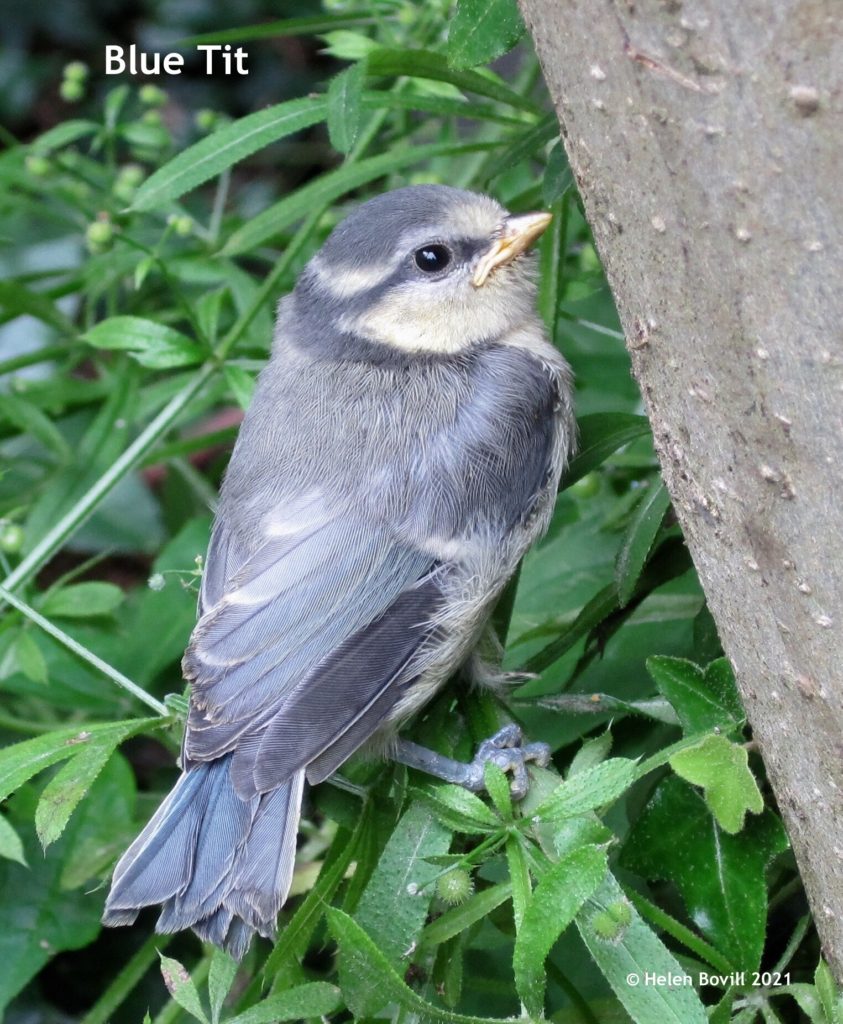
Some of the birds I did manage to see were busy gathering food for their chicks, many of which will now have fledged. Young Blue Tits are the same size as the adults but are a lot paler in colour. They have powder blue legs and the yellow gape is still visible at the sides of their beaks.
Butterflies and Other Insects
There were not many butterflies around this month. The ones that emerged earlier in the year will have mated, laid their eggs and then died. The period between that and the emergence of the next generation from July onwards is what has become known as the ‘’June gap’’.
There were still some Speckled Woods around though and I caught a brief glimpse of a Red Admiral. I also found an Orange-tip caterpillar. This will then pupate away from its food plant and emerge as an adult next Spring.
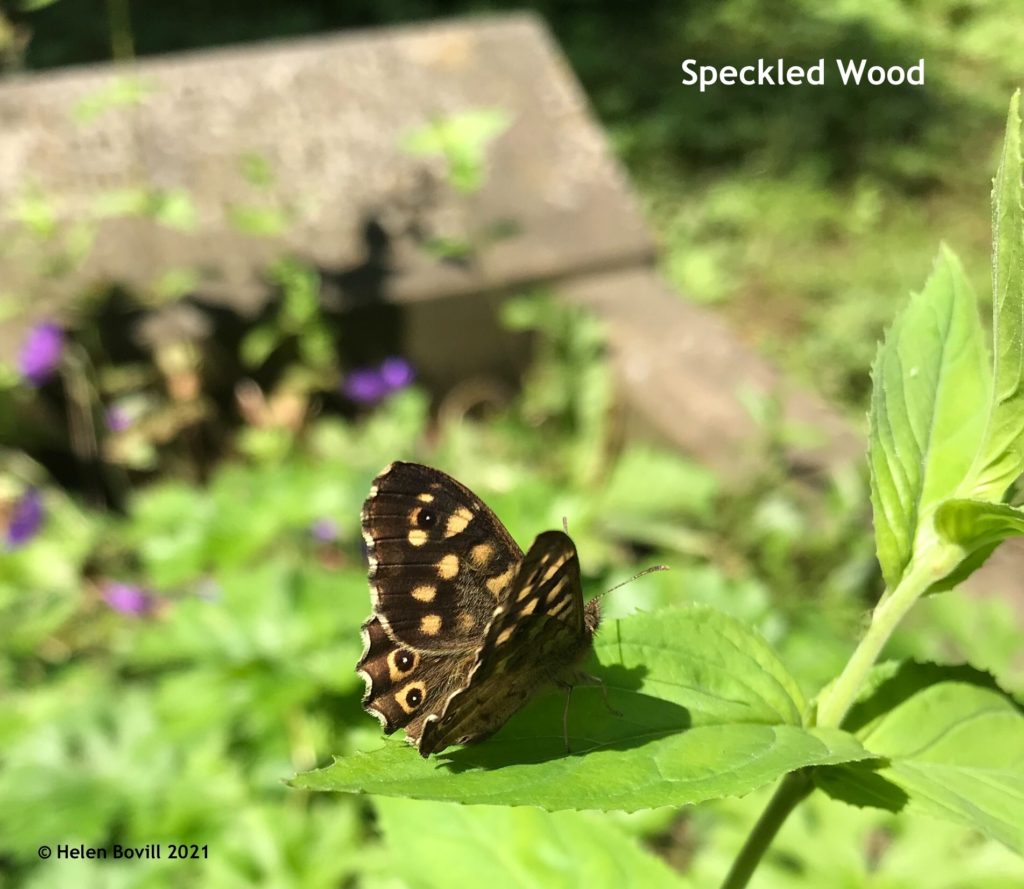
There are currently lots of these unusual little bugs around – they’re Ladybird larvae.
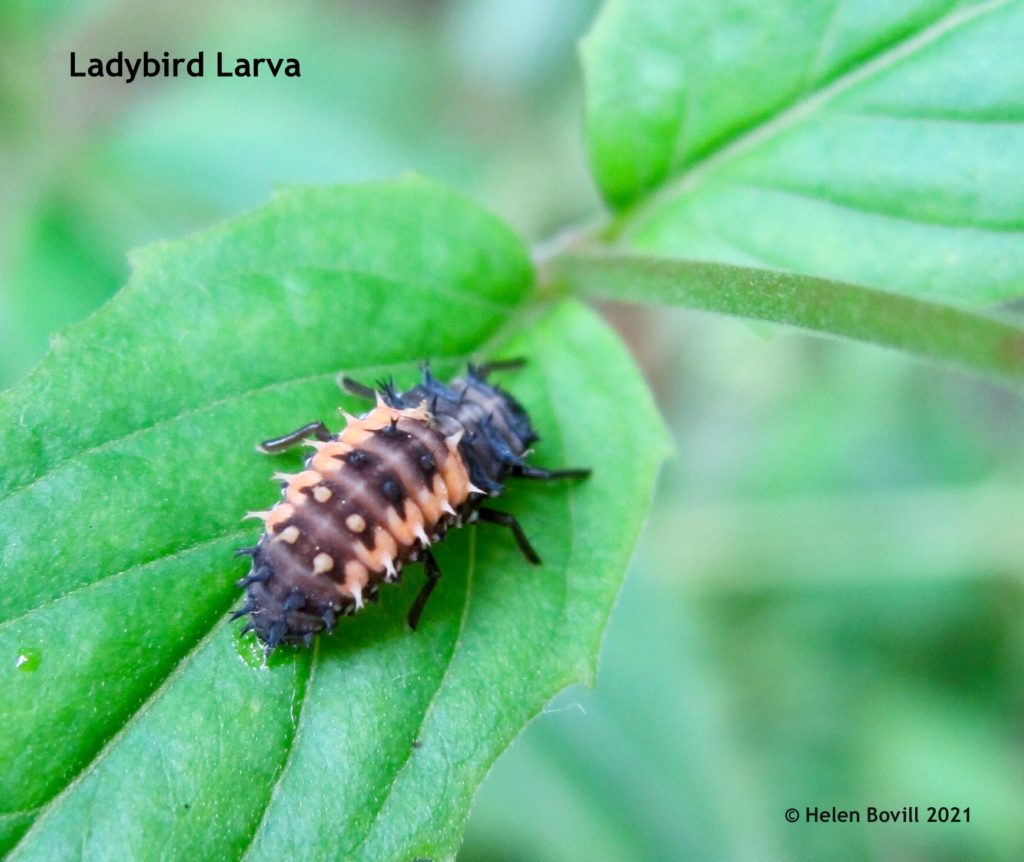
Flowers and other plants
Lots of Summer flowers are now starting to open inside the Cemetery, including a Rhododendron. Opinions are divided as to whether this is a good or bad plant to have here, but it is small and not growing close to any of the headstones. It adds an attractive splash of colour in a shaded area and provides a source of nectar for insects.
Bearing in mind the destruction of so many of the wildflowers on the grass verge, any source of nectar is more important than ever.
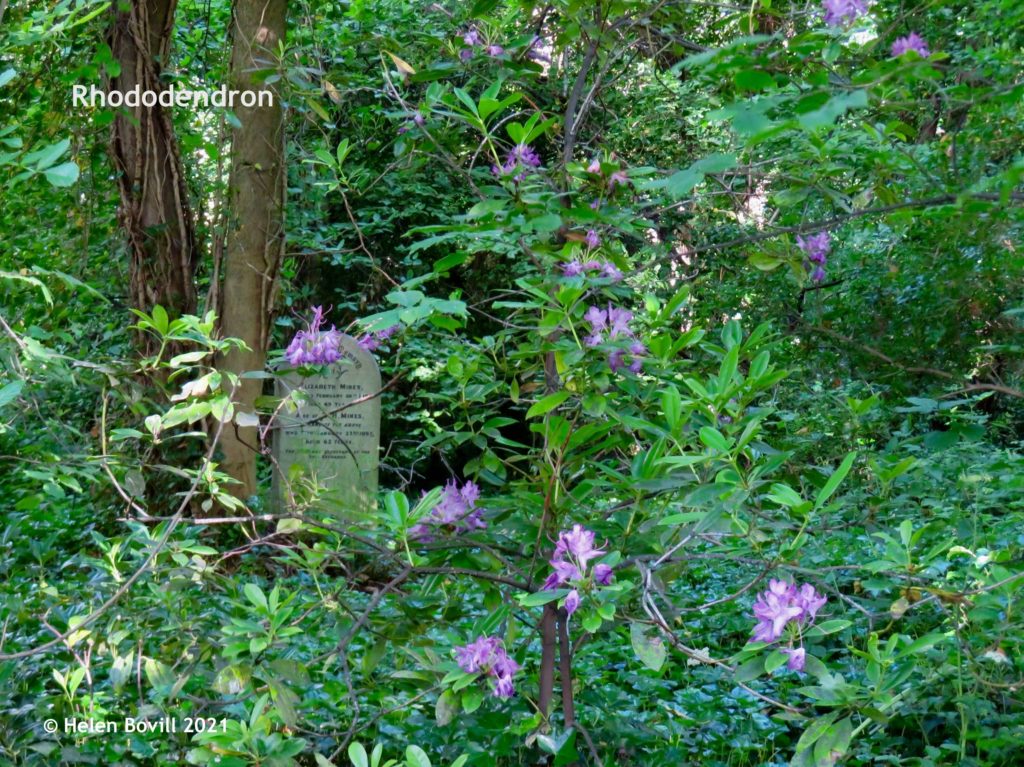
The Cow Parsley, Hogweed and Wild Garlic has started to die back as expected. There are plenty of smaller wildflowers now coming through including Buttercups, Speedwell, Wood Avens and Red Campion.
Some of the flowers planted by the volunteers prior to the Stop Notice are now starting to flower but I will talk about those in the next newsletter.
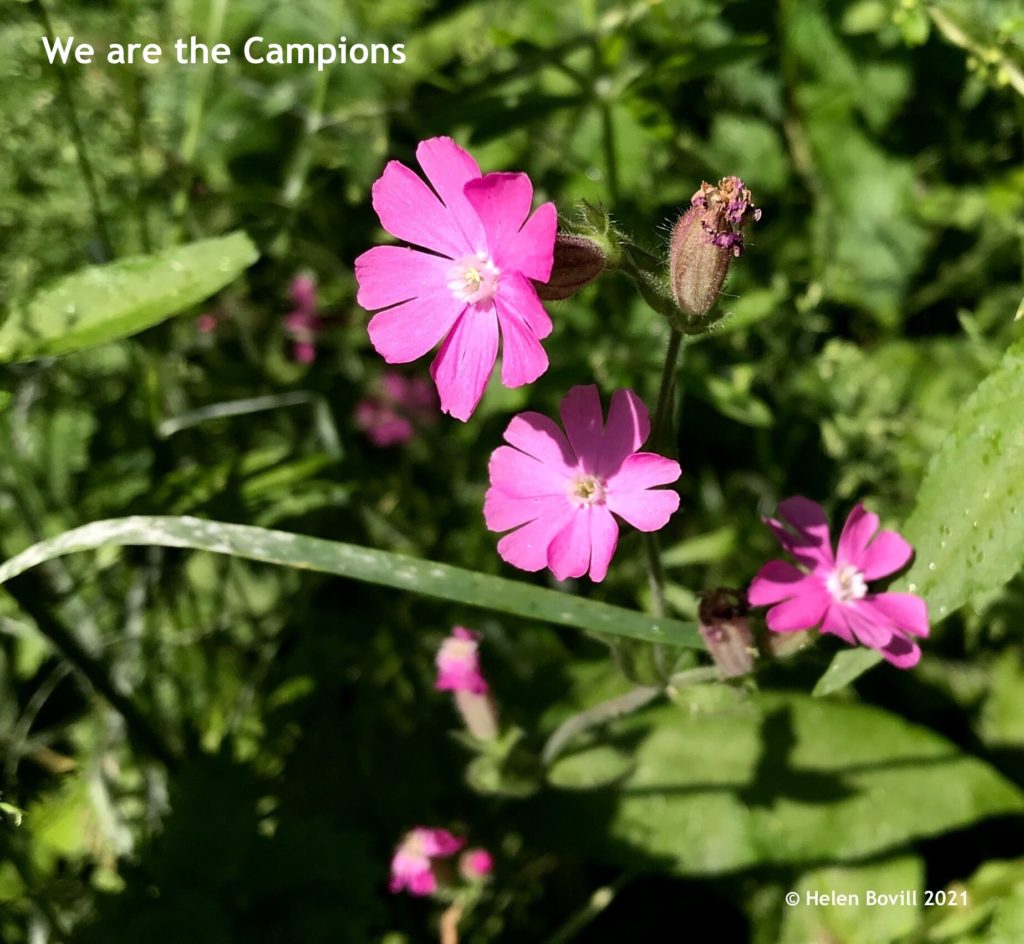
Mushrooms Wonderful Wildlife
Some more glistening Inkcaps were seen on a log, and I found some Common Inkcaps too.
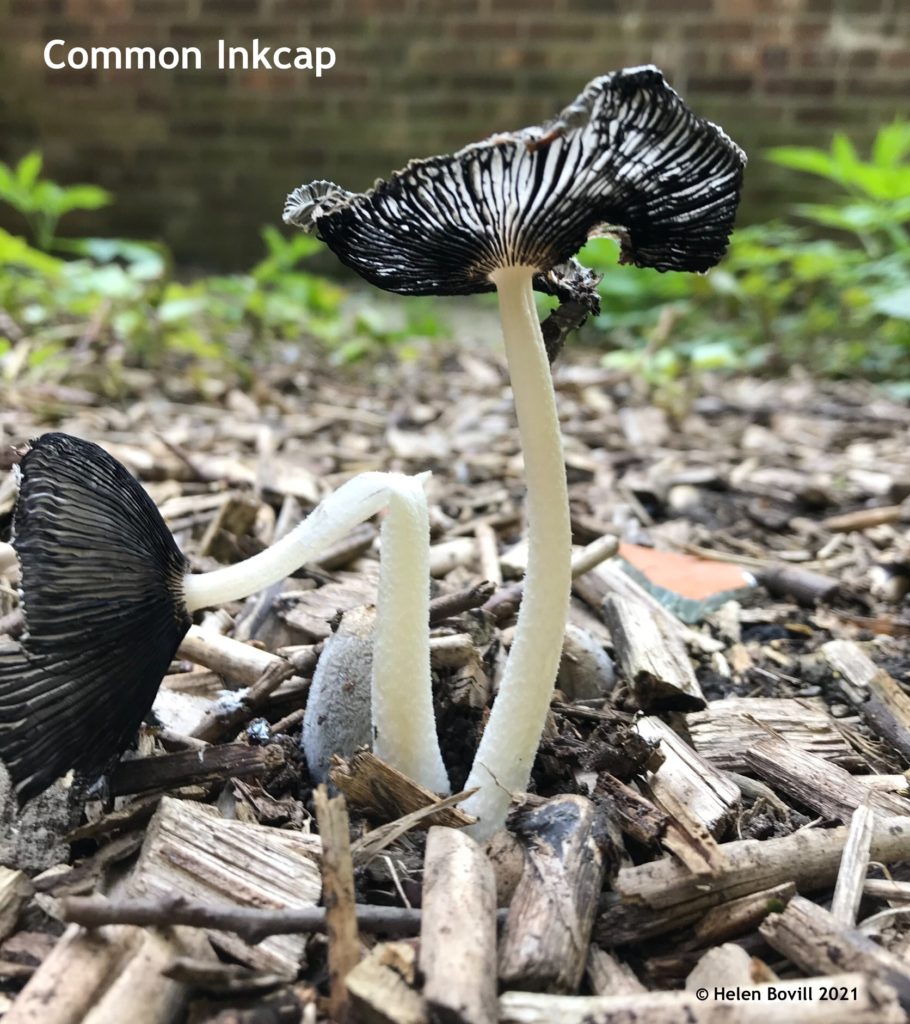
But the best find was a beautiful Chicken of the Woods! It was the first time I’d seen one in the Cemetery but unfortunately a few days after I took the photo on the left someone removed most of it. The photo on the right shows where the brackets have been sliced off.
Another sad, selfish and disheartening act, this time by an individual. This has deprived other people of the change to simply enjoy looking at some beautiful and amazing specimens.
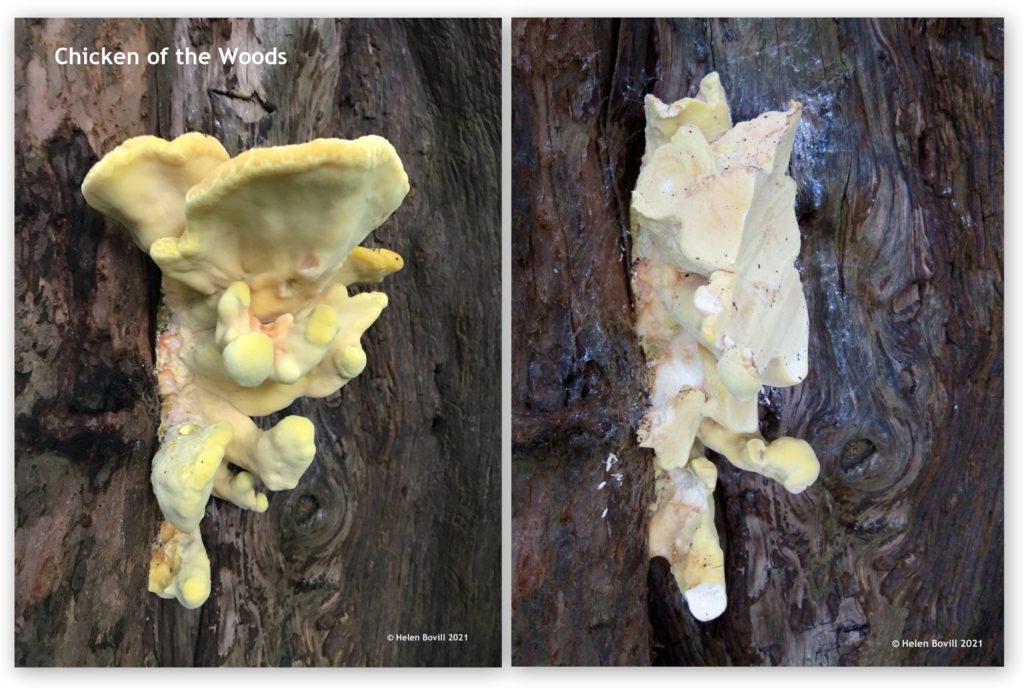
Mammals
A new sub-heading to reflect the very good news that the foxes have had at least two cubs!

The foxes are rarely seen during the day so one of the volunteers placed their own trail camera in a secluded position away from the footpaths. And the results were very encouraging to say the least! The camera is no longer there; this was just a quick experiment for a few nights only.
Conclusion
Overall a month of mixed fortunes for the wonderful wildlife of our favourite cemetery.
We can only hope that the Council will allow the grass verge to recover so that we can once again enjoy seeing the wildflowers, butterflies, bees and other insects as we walk past or linger to take a photo or two.


